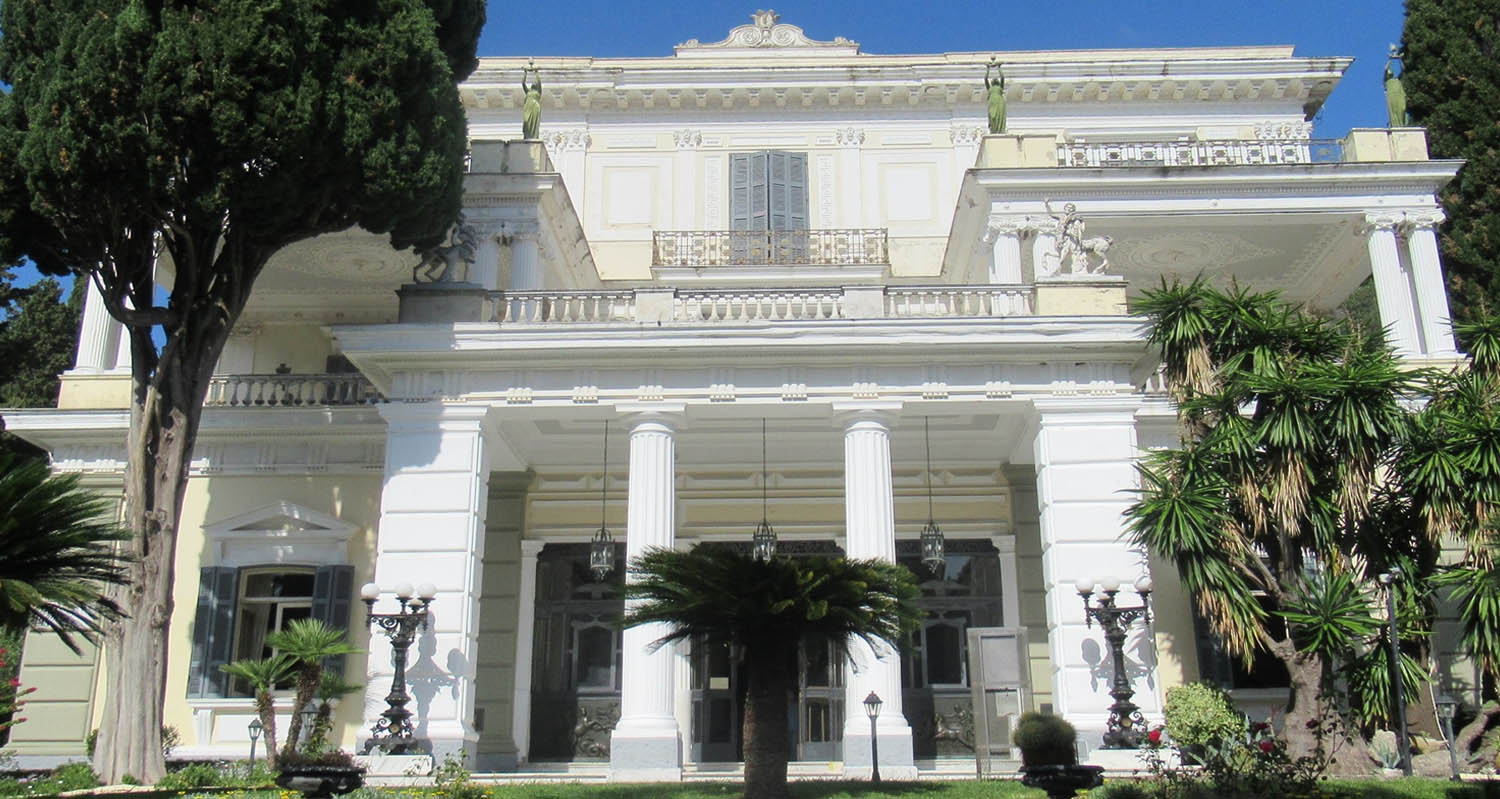
Achilleion Palace
Achilleion Palace
Achilleion is one of the most famous royal palaces in Europe and perhaps the most important architectural attraction of Corfu. It is located in the settlement of Gastouri, about 10 km from the city of Corfu. It was built in 1890 exclusively for Elisabeth (known as Sisi), the former Empress of Austria, and served as the Empress’s summer refuge.
Old Fortress
The Old Fortress of Corfu is a fortress, built on a rocky peninsula with two characteristic hills and consists the eastern edge of the city.
The city of Corfu is separated from the fortress by an artificial moat, which was created for greater protection and is called Contrafossa. To enter the fortress, one must cross the bridge that connects the city with this artificially created island. This location was an ideal choice as it allows easy access to the sea network and full control of the neighboring coasts, while the high fortifications in combination with the artificial moat made impossible the access for any intruder.
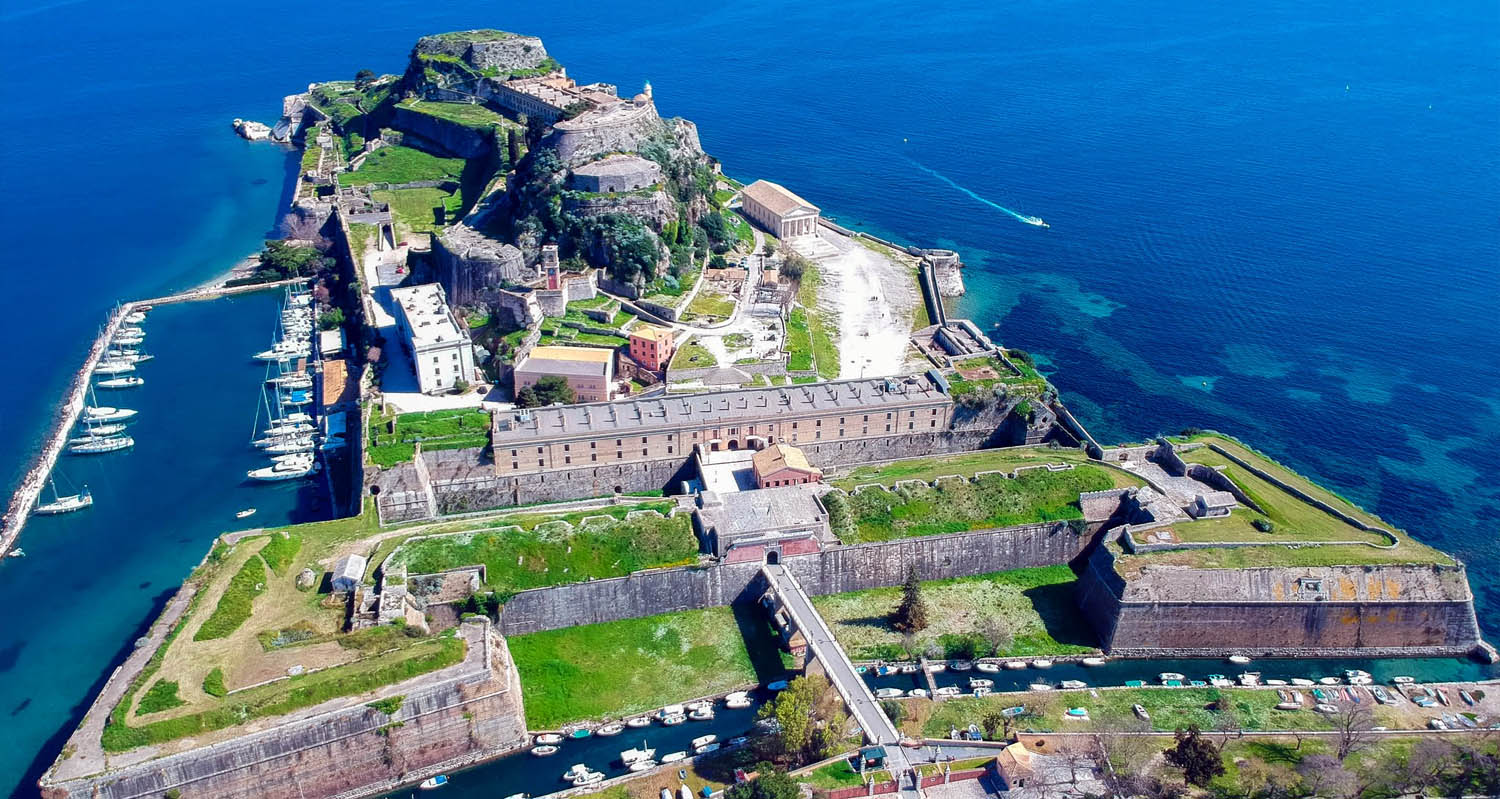

Old Fortress
The Old Fortress of Corfu is a fortress, built on a rocky peninsula with two characteristic hills and consists the eastern edge of the city.
The city of Corfu is separated from the fortress by an artificial moat, which was created for greater protection and is called Contrafossa. To enter the fortress, one must cross the bridge that connects the city with this artificially created island. This location was an ideal choice as it allows easy access to the sea network and full control of the neighboring coasts, while the high fortifications in combination with the artificial moat made impossible the access for any intruder.
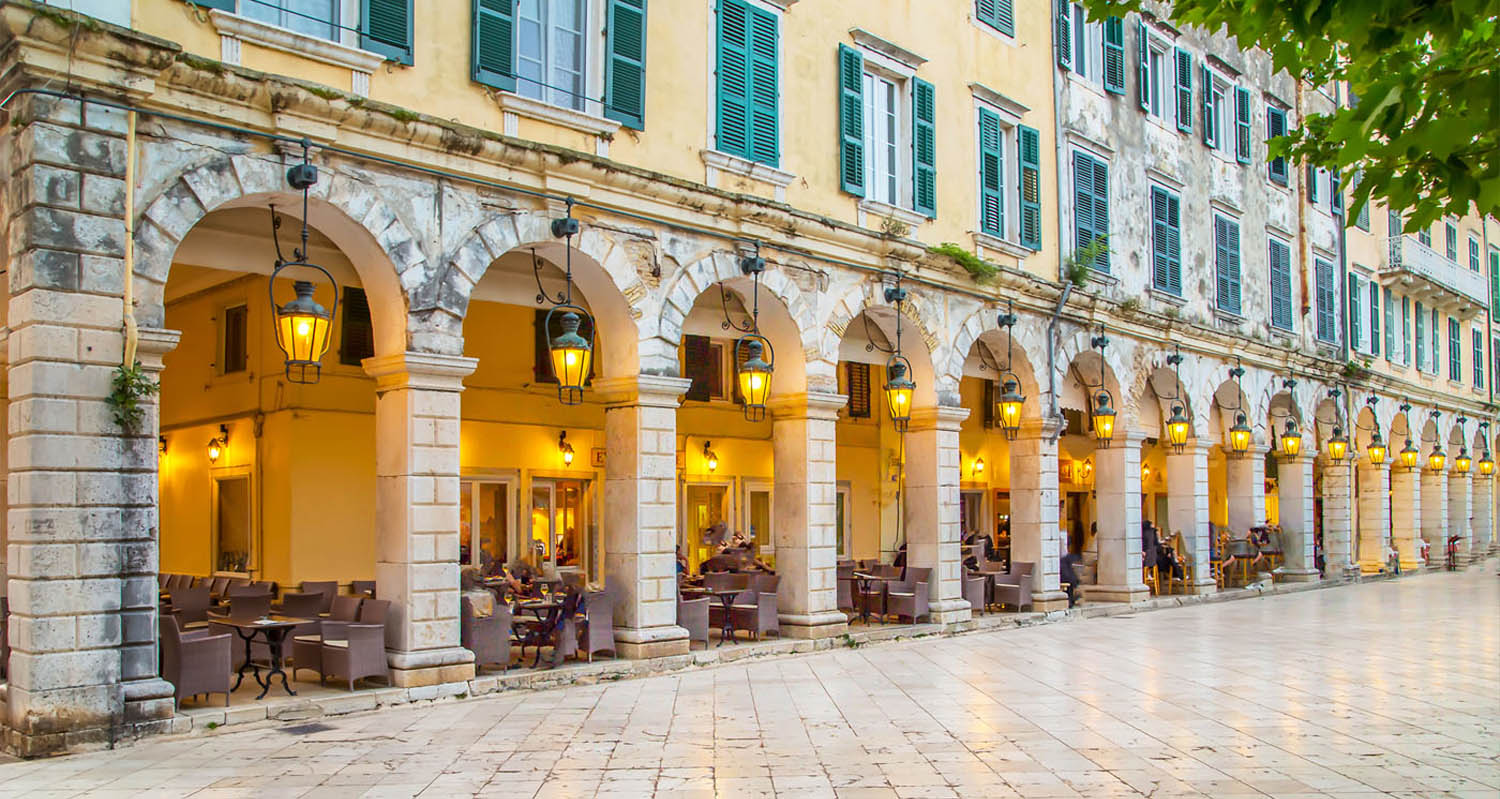
Liston Square
Liston Square
Liston is the most central pedestrian street of Corfu, the most famous “walk” for the inhabitants of Corfu. It is located at the western edge of the large square Spianada, and is demarkated by mansions that form large arches on their top floor. These arches, called “walks” by the inhabitants, nowadays house a number of cafes and restaurants, which make Liston the center of Corfu life for locals and visitors.
Liston is the central place where the people of Corfu meet during their social activities since it was created, while the famous Epitaph procession which takes place there in Good Friday is one of the traditional customs of Corfu Easter. The pavement of Liston is also the main entrance to the narrow cantonments of the Old Town of Corfu.
Paleokastritsa Beach
Paleokastritsa is undoubtedly the most famous picturesque village on the Corfu island, located 23 km northwest from Corfu town. The word Paleokastritsa literally means old fortress, testifying to the existence of such a castle in the rocky cave where the Monastery of Panagia is located today.
Paleokastritsa offers a plethora of local taverns overlooking the blue bay as well as six scattered throughout the area beaches with sand and pebbles. These beaches are surrounded by olive groves, creating a dramatic but beautiful landscape.
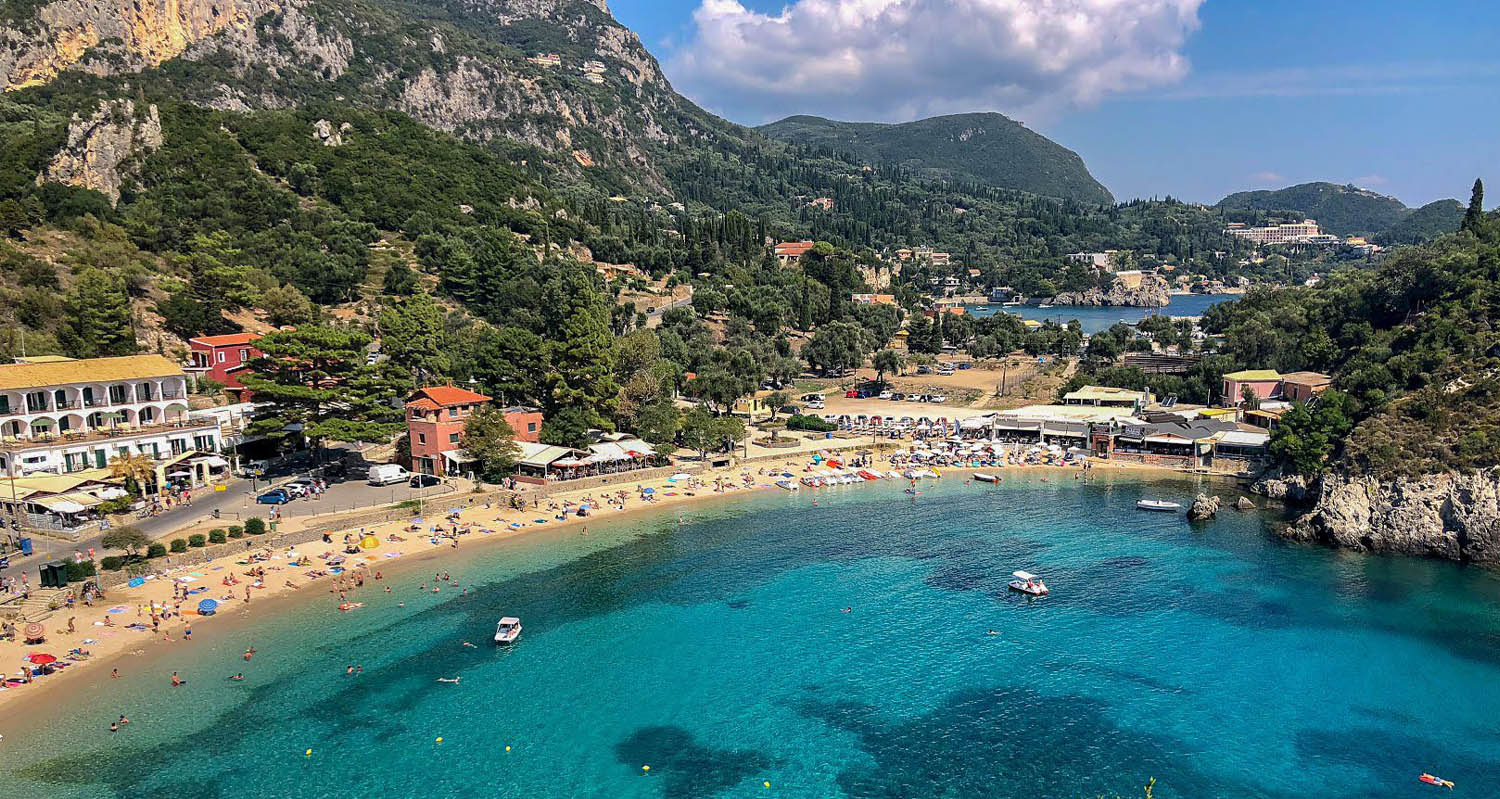

Paleokastritsa Beach
Paleokastritsa is undoubtedly the most famous picturesque village on the Corfu island, located 23 km northwest from Corfu town. The word Paleokastritsa literally means old fortress, testifying to the existence of such a castle in the rocky cave where the Monastery of Panagia is located today.
Paleokastritsa offers a plethora of local taverns overlooking the blue bay as well as six scattered throughout the area beaches with sand and pebbles. These beaches are surrounded by olive groves, creating a dramatic but beautiful landscape.
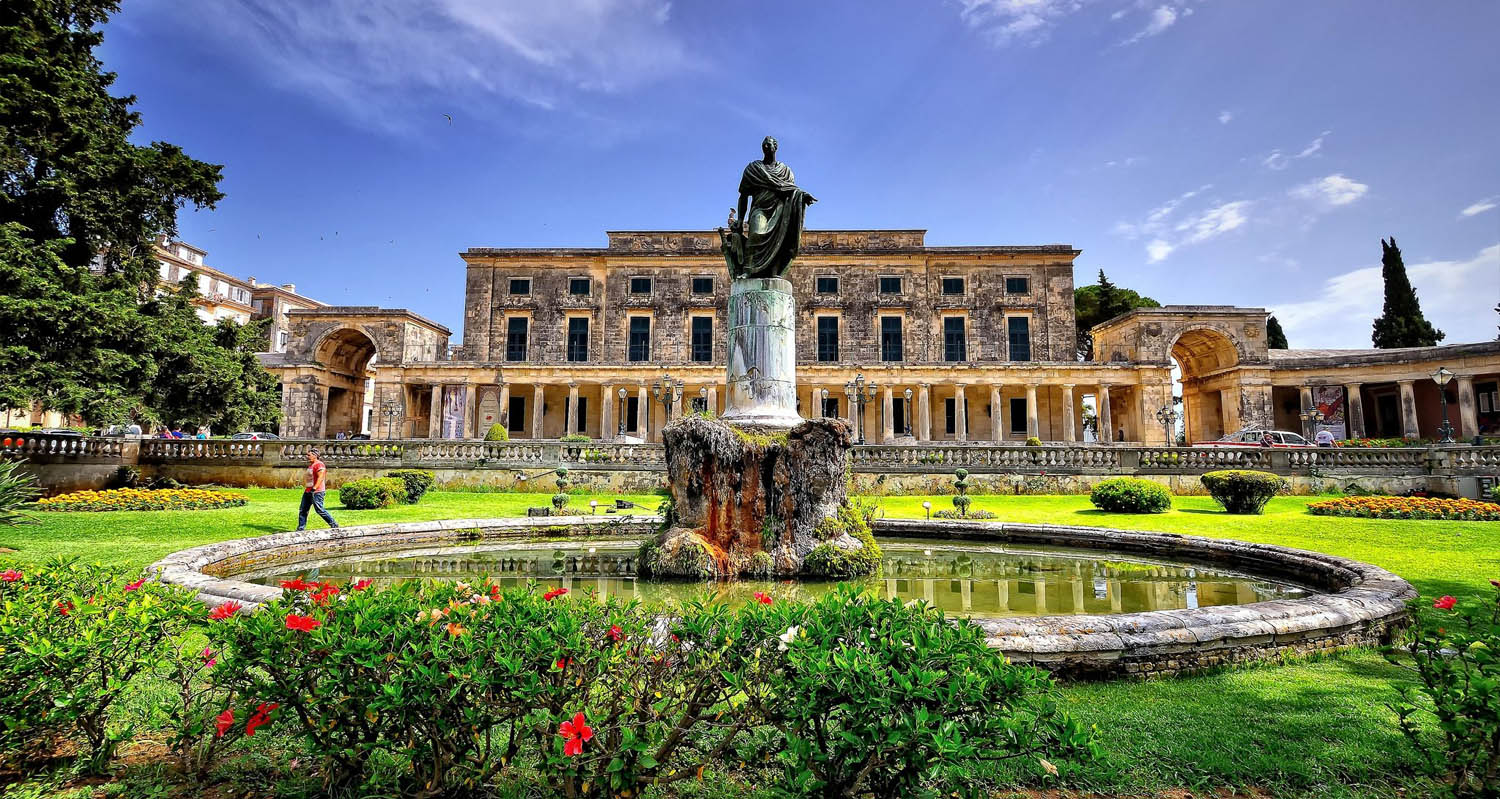
Museum of Asian Art
Museum of Asian Art
The Museum of Asian Art of Corfu was founded in 1928 as a Museum of Sino-Japanese Art following the donation of the Sino-Japanese collection of Gregorios Manos to the Greek state. Since then, the Museum has been a pole of attraction for many other donations, resulting in its collection currently comprising approximately 15.000 works of Asian art from private collections and individual item donations. In 1973 the Chatzivasileiou donation, in particular, with the addition of 400 works from India, Pakistan, Tibet, Siam and southeast Asia, changed the Museum’s strictly Sino-Japanese profile and led to its renaming into the Museum of Asian Art.
Today, the Palace of St. Michael and St. George houses the Corfu Museum of Asian Art, the one-of-a-kind museum in Greece, solely dedicated to the art and antiquities of Asia. Nowadays, it enjoys worldwide recognition, with rare items from its collections being presented in international exhibitions.
Our most recommended things to do in Corfu
Our most recommended things to do in Corfu



